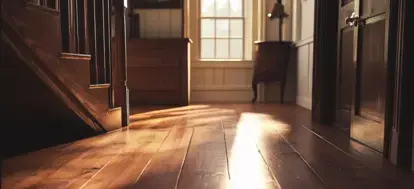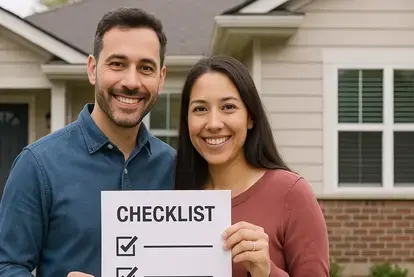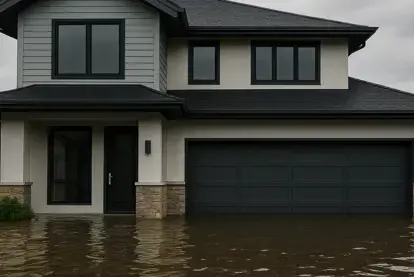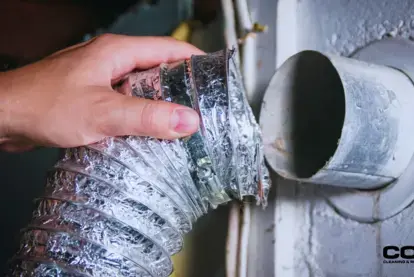
How to Keep Your Wood Floors Looking Beautiful
Contact COIT for a professional cleaning!
Hardwood floors bring plenty of warmth and character to your space. But let’s be honest—keeping hardwood looking its best takes more than an occasional sweep. From daily wear and tear to seasonal changes, hardwood floors require regular care to preserve their beauty and longevity.
In this guide, we’ll cover everything you need to know about maintaining hardwood floors. Whether you’re dealing with spills, scratches, or just trying to keep your floors shining, we’ve got you covered with practical tips and expert advice.
Why Regular Hardwood Floor Care Matters
Hardwood floors are an investment. And like any investment, they need care to maintain their value.
Dirt, dust, and debris don’t just dull the surface—they act like sandpaper, scratching and damaging the finish over time. Left unchecked, spills can lead to stains, warping, or even long-term structural issues.
Beyond aesthetics, clean floors contribute to a healthier environment.
Dust, pollen, and pet dander can accumulate in the cracks and crevices of wood floors, aggravating allergies or respiratory conditions. Regular cleaning helps create a more welcoming and healthier space for everyone.
Understanding Your Hardwood Floors
Before you start cleaning, you need to make sure you understand what type of wood flooring you have. Different types of hardwood require different care:
Solid Hardwood
Made from a single piece of wood, these floors are durable but sensitive to moisture. Regular maintenance can extend their lifespan and keep them looking beautiful for decades.
Engineered Hardwood
Layers of wood glued together with a hardwood veneer on top. Engineered wood is more resistant to humidity but still requires careful maintenance. Avoid over-wetting these floors as water can seep between the layers.
Laminate Flooring
Not true hardwood, but a photographic layer of wood grain covered with resin. Laminate is less expensive but prone to damage from improper cleaning. Stick to gentle, dry methods and avoid harsh chemicals to maintain its appearance.
Contact COIT for a professional cleaning!
Daily and Weekly Cleaning Routines
Let’s talk routines. Consistent cleaning is the key to keeping your hardwood floors in top condition. A little daily effort goes a long way, and weekly maintenance will help tackle any buildup that a quick sweep might miss.
Daily Care:
- Use a soft-bristled broom or microfiber dust mop to remove dust and debris. Avoid stiff bristles, which can scratch the surface.
- For high-traffic areas, use a handheld vacuum with a soft-brush attachment.
Weekly Cleaning:
- Mop with a damp microfiber mop. Avoid soaking the mop—excess water can damage the wood. Use a cleaner specifically designed for hardwood floors.
- Vacuum with a hardwood floor-safe vacuum that has no rotating brushes or harsh bristles.
Seasonal Care
Seasonal changes can be tough on hardwood floors—wood naturally expands and contracts with fluctuations in humidity and temperature. Here’s how to adapt your care routine year-round:
Winter
Dry air from heating systems can cause wood to shrink and create gaps between planks, which might make your floors look uneven and potentially weaken the seams.
To combat this, use a humidifier to maintain indoor humidity levels between 35% and 55%. Place mats near entrances to catch moisture from snow and salt, which can damage the surface, and be diligent about wiping up any water or snow tracked in to avoid stains or warping.
Summer
High humidity in the summer can cause wood to swell, leading to cupping or warping of the planks. Air conditioning can help reduce some of this indoor humidity, but for homes in really humid climates, a dehumidifier might be necessary.
Regularly inspect your floors for signs of swelling, especially in high-traffic areas, and consider using area rugs to protect the floor from barefoot traffic which can leave behind moisture and oils.
Seasonal Cleaning Tip: Deep clean your floors at the start of each season to remove accumulated debris and refresh the finish.
How to Handle Spills and Stains
Accidents happen, but the quicker you act, the better. Wood floors are porous, so they absorb liquids quickly, which leads to stains, discoloration, and damage. The key is to clean spills right away to prevent liquids from seeping into the wood.
- Spills: Blot immediately with a soft, dry cloth. Avoid rubbing, as this can spread the spill. Once the area is dry, clean with a damp microfiber cloth and a wood-safe cleaner.
- Stains: For stubborn stains like wine or coffee, use a small amount of hydrogen peroxide on a cloth. Gently dab the stain, then wipe with a damp cloth.
- Grease or Oil: Sprinkle baking soda on the area and let it sit for a few minutes. Wipe clean with a damp cloth.
Contact COIT for a professional cleaning!
Preventing Scratches and Damage
Avoid ruining your beautiful hardwood floors with scratches using a few expert tips. These small preventative measures can save you from costly repairs down the line::
- Use felt pads under furniture legs to prevent scratching.
- Place rugs or runners in high-traffic areas and near entryways.
- Trim your pet’s nails to avoid claw marks.
- Avoid walking on your wood floors with high heels or cleats.
- When you’re moving heavy furniture, use a dolly or place a thick blanket underneath to prevent dragging.
Choosing the Right Cleaning Products
Not all cleaning products are safe for hardwood floors. Harsh chemicals like bleach, ammonia, or vinegar can strip the finish or cause discoloration.
Instead, opt for cleaners specifically designed for hardwood floors:
- Bona Hardwood Floor Cleaner
- Method Wood Floor Cleaner
- Black Diamond Wood & Laminate Floor Cleaner
If you prefer a DIY approach, mix a few drops of mild dish soap with water. But always test a small, inconspicuous area before cleaning the entire floor.
Eco-Friendly Cleaning Options
If you prefer natural solutions, don’t worry! There are plenty of eco-friendly ways to clean your hardwood floors. Just be mindful of your floor’s finish.
- Mix equal parts water and white vinegar, but use sparingly—vinegar can dull certain finishes.
- Combine water, a few drops of essential oil, and a small amount of castile soap for a fresh-smelling, natural cleaner.
- Opt for plant-based cleaners available at most grocery stores.
Pet-Specific Care Tips
If you have pets, your hardwood floors might face extra challenges like fur, scratches, and accidents. Here’s how to stay ahead:
- Use a vacuum with a HEPA filter to remove pet hair and dander.
- Clean up accidents immediately to prevent staining.
- Place washable rugs or mats in areas where your pets spend the most time.
Common Hardwood Floor Mistakes to Avoid
At COIT, we’ve seen it all, and we’re here to warn you that keeping your hardwood floors in great shape means steering clear of a few common missteps.
Using steam mops, for example, can force moisture into the wood, causing it to warp over time. Similarly, oversaturating the floor with water during mopping can lead to swelling and damage. Skipping furniture pads might seem harmless at first, but it often leads to huge scratches caused by everyday movement. Harsh cleaning products that contain ammonia or bleach can strip away your floor’s protective finish, leaving it vulnerable to wear and tear.
When to Call the Pros
Sometimes, even the best DIY efforts aren’t enough.
If your floors are dull, stained, or scratched beyond what regular cleaning can fix, it’s time to bring in professional help. At COIT, we specialize in restoring hardwood floors to their original beauty. Our experts use advanced techniques and wood-safe products to tackle stubborn dirt, scratches, and discoloration.
We’ll help you protect your investment and keep your floors looking their best. Contact us today to schedule a professional hardwood floor cleaning.



